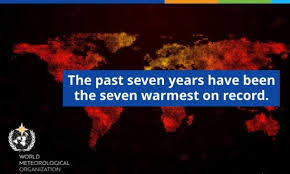From the Article by Elizabeth Kolbert, New Yorker Magazine, November 28, 2022
The Institute for Exercise and Environmental Medicine, in Dallas, offers a hyperbaric chamber where divers can recover from the bends, a pool equipped to continuously measure swimmers’ oxygen use, and a climate-controlled vault that can be programmed to test the limits of human endurance. Not long ago, I swallowed a thermometer the size of a pill and had myself sealed in the vault.
Formally known as the environmental chamber, the vault resembled a walk-in freezer, with metal walls and a pressed-metal floor. Pretty much every available surface was occupied by machinery — computer screens, thermocouples, an electrocardiogram monitor, a treadmill, and a sort of stationary bicycle that looked like a suitcase with pedals. In the center sat a lawn chair, which a technician indicated I should take.
With me in the chamber was a researcher named Josh Foster. Before he allowed me to enter the vault, Foster had asked for a urine sample —a first in my reporting career. He’d also stuck some electrodes on my chest and performed an ultrasound scan of my heart, which, he said, was unusually low and hard to find.
Foster, who is British, is interested in the effects of extreme heat on the body. To this end, he creates miniature heat waves and solicits volunteers to sweat their way through them. On the day I volunteered, the temperature in the vault was a hundred and six degrees and the humidity forty per cent.
“Temperature regulation is one of the most important variables the body will try to protect,” Foster told me. “Because as soon as you start to stray from what’s normal, outside of a given quite small range, our ability to tolerate that is very, very low.”
Once a topic of marginal academic interest, the physiology of heat stress is now a subject of widespread practical concern. According to a recent study, two hundred and seventy-five million people around the globe are subjected to life-threatening temperatures at least one day a year, and this number could easily grow to eight hundred million by the middle of the century.
According to another recent study, the incidence of “extreme humid heat” has doubled in the course of the past forty years. Some parts of the world, particularly in South Asia and around the Persian Gulf, are already experiencing temperatures close to the human “survivability limit.”
This past summer, heat record after heat record fell. In Pinhão, in northern Portugal, temperatures topped a hundred and seventeen (117) degrees. In Sacramento, California, the mercury hit a hundred and sixteen (116) degrees. Yanjin City, in southwestern China, saw a hundred and eleven (111); Abilene, Texas, a hundred and ten (110); and London a hundred and four (104).
The human body reacts to such temperatures by sweating and directing more blood toward the skin. Problems arise when people become dehydrated, or their hearts get overtaxed, or it’s just so sweltering that they can’t dissipate enough heat. The elderly are particularly vulnerable to heat stress, Foster told me, because they sweat less than young people, and their hearts don’t pump as efficiently. (Humidity impedes the evaporation of sweat, which is why extreme humid heat is so dangerous.) One consequence of prolonged heat exposure can be a kind of blood poisoning.
“Increased blood flow to the skin means that less blood is being directed toward the gut,” Foster explained. “And, if that happens for a long enough time, it can damage the cells that line the gut, and bacteria that are normally housed in the gut can leak out. It’s basically the same as having sepsis.” The heat wave that affected most of Europe this past summer is estimated to have killed more than fifteen thousand people.
Sitting in the environmental chamber, with the pill-size thermometer in my stomach, would, I hoped, be edifying without being too edifying. Until the U.S. and the other big emitters reach net zero — indeed, until the entire world reaches net zero — the planet will continue to warm. What is the future we’re creating actually going to feel like?
Every quarter of an hour, I was supposed to ride the stationary bicycle for five minutes; this was to simulate the sort of effort a person would have to make in the course of completing ordinary household chores. I started off strong but after a few rounds began to flag. The humidity made the air seem strangely solid. I tried to imagine what it would be like to perform real work under these conditions but found it difficult to hold on to a thought.
A few days later, when I got back home, Foster sent me the data that had been collected by the various instruments. I had sweated out almost a pint of water every hour. My heart rate had increased by thirty beats a minute and the blood “ow through my brachial artery had more than tripled. Despite all the (admittedly involuntary) effort I had made to thermoregulate, my core temperature had risen to a hundred degrees.
#######+++++++#######+++++++#######
See Also: Climate Change 2021: The Physical Science Basis | (Sixth IPCC Report)
Results from a wide range of climate model simulations suggest that our planet’s average temperature could be between 2 and 9.9°F (1.1 to 5.7°C) warmer in 2100 than it is today. The main reason for this temperature increase is carbon dioxide and other heat-trapping “greenhouse” gases that human activities produce.

